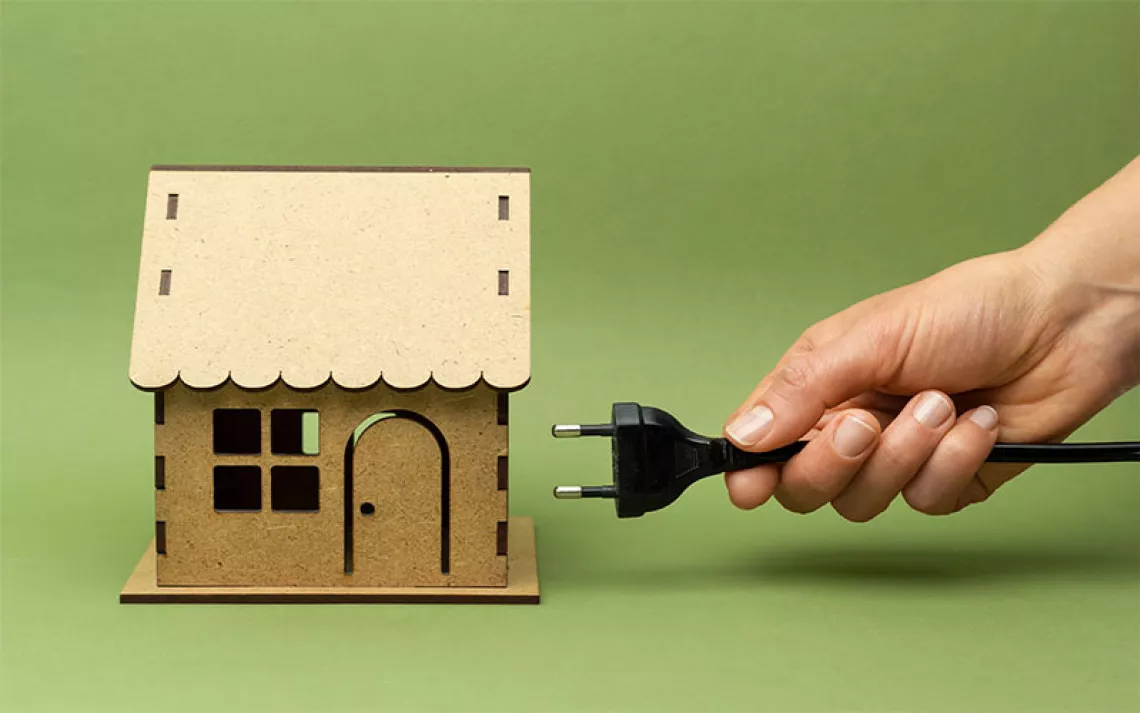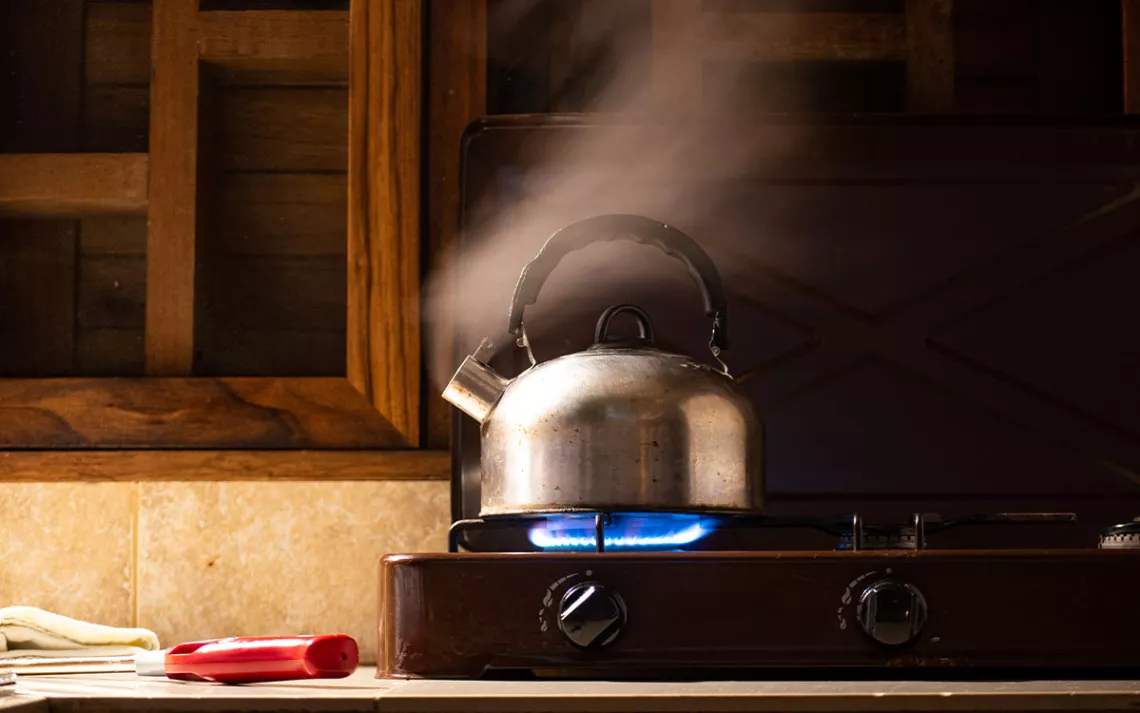How to Decarbonize Your Entire Home
A guide to electrifying your residence, from heat pumps to solar panels and more
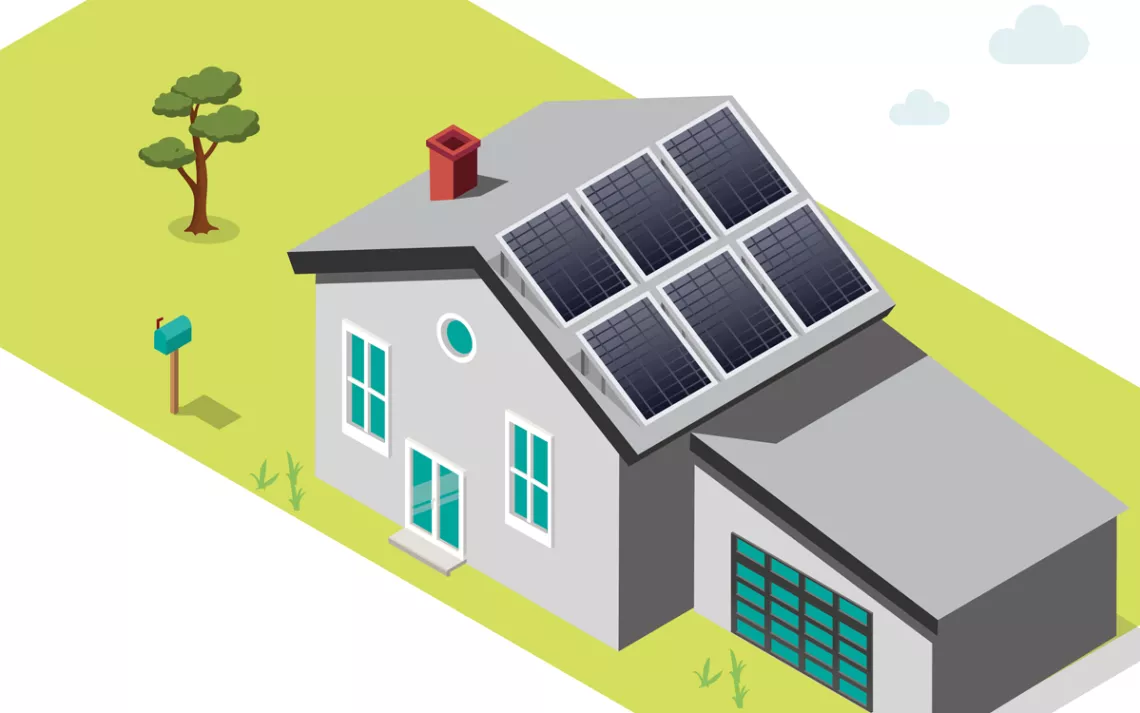
IF YOU WANT TO HELP fight climate change—while saving money in the long run—electrifying your home is a great place to start. Residential energy use accounts for 20 percent of US greenhouse gas emissions, which are mostly the result of heating and cooling. Using electrical appliances for these activities will go a long way toward eliminating your carbon footprint.
Today’s electrical appliances are more than capable of replacing fossil-fuel-burning ones, as I learned from my own recent home electrification project. Best of all, there are numerous state and federal incentives that make it cheaper than ever to install them. Here’s a guide to help you get started on your journey to electrifying your home.
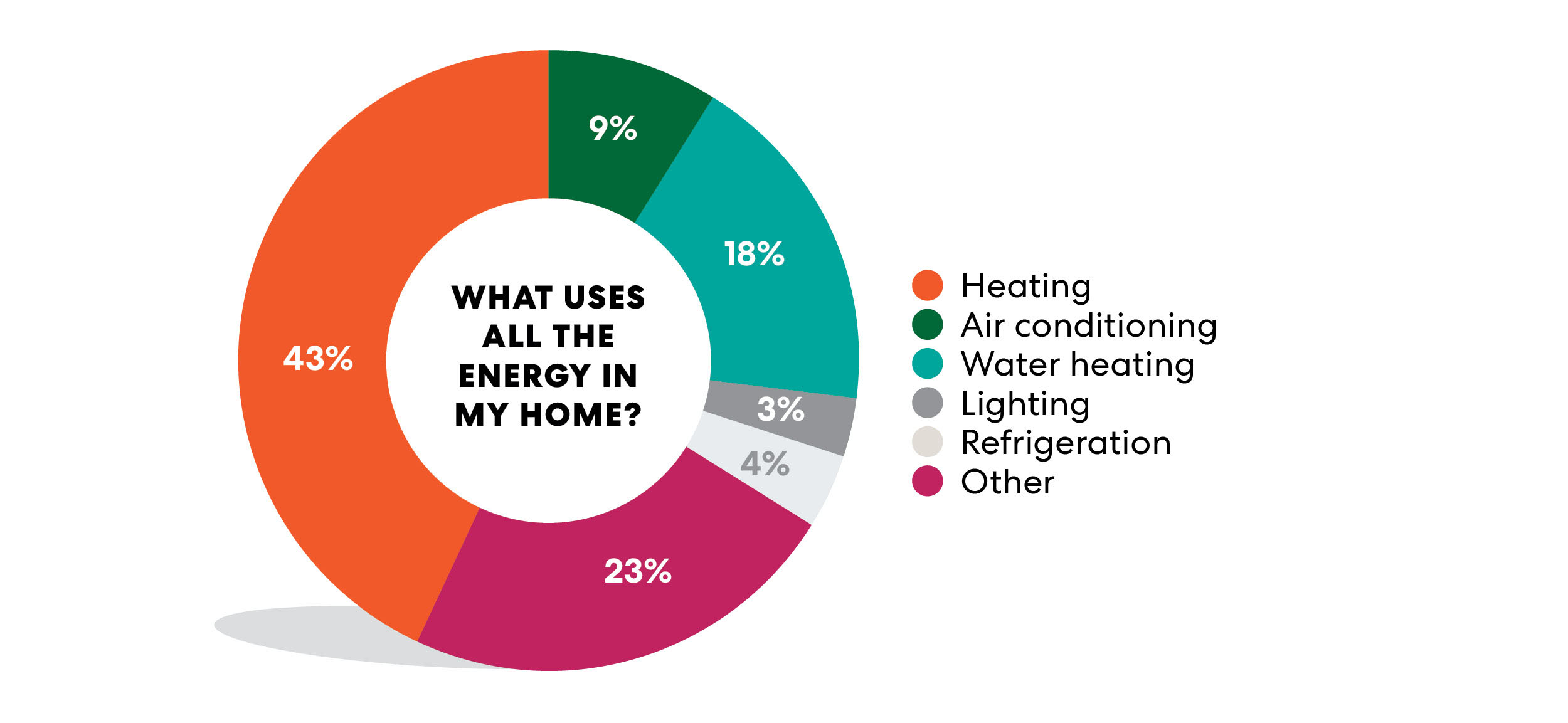
Rooftop Solar and Energy Storage
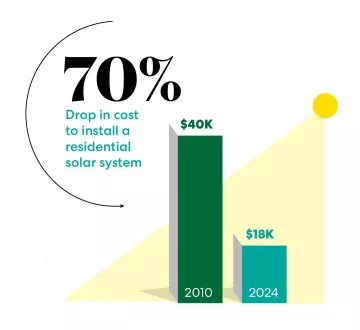
When you invest in rooftop solar, you’re essentially turning your home into a mini power plant. That’s great for tackling climate change, but many homeowners want to know how rooftop solar can help save money. According to the Department of Energy, you’re most likely to see benefits if you live in a state with favorable incentives or above-average electricity rates. If you also live in a state that allows you to sell surplus electricity back to your utility, called net metering, doing so could help you recover the cost of installing solar and storage over time.
The installation that works best for you will depend on the size of your roof, your energy usage, and the amount of sunlight available. While there are some national firms—like Tesla and SunRun—that perform installations in multiple states, many firms are local or state outfits. Your utility may have a list of prescreened contractors.
Battery storage systems that can keep the power running in a blackout will make economic sense in the future if the cost of batteries continues to fall. Also, if your local regulators reduce the value of utility incentives for solar, as recently happened in California, it is more advantageous to store power from your rooftop solar panels for use throughout the day. Some utilities, like Green Mountain Power in Vermont, will even pay you for power stored in your battery when there is high demand on the grid.
Federal incentives make it easier to pay for an electrification retrofit. With tax incentives authorized by the Inflation Reduction Act, you can claim up to 30 percent of the cost of a solar PV or battery storage system; up to $840 toward an electric stove, cooktop, range, or oven; and up to $2,000 annually toward the cost of heat pumps and heat pump water heaters, through 2032. Rewiring America’s online Personal Electrification Planner and Savings Calculator can help homeowners with project planning and budgeting.
Contractor Factor
Old-guard contractors are notorious for pushing gas appliances. But as the demand for home electrification grows, companies that specialize in such projects, like Electrify My Home in the San Francisco Bay Area and Baker Home Energy just outside San Diego, are becoming more common.
The transition to an all-electric home may require hiring an electrician to install the necessary outlets, especially if you are switching from gas to electric equipment in the kitchen. You may have to upgrade the main electrical panel to one that can handle rooftop solar and batteries.

Heat Pumps
The key to heat pumps’ remarkable efficiency is the lack of combustion. Unlike furnaces and boilers that burn gas or propane to generate heat, a two-way electric heat pump draws heat inside in winter and expels heat in summer.

Which heat pump is right for you? If you already have central heating or cooling, you’ll likely want a ducted air-source heat pump. For small spaces and homes without ductwork, a ductless mini-split heat pump is a good choice. They work well for controlling temperatures in different rooms. Another option is a geothermal heat pump (also known as a ground-source heat pump), which is expensive but can be more efficient.
No matter where you live, the type, model, and brand you choose will depend on the size of your home and how it’s insulated as well as what your local contractors offer, as contractors often have relationships with specific manufacturers. In a Consumer Reports survey, American Standard and Trane received top marks for both predicted reliability and owner satisfaction. If you live in a place with frigid winters, like Maine or Alaska, check out the Northeast Energy Efficiency Partnerships’ list of cold-climate air-source heat pumps.
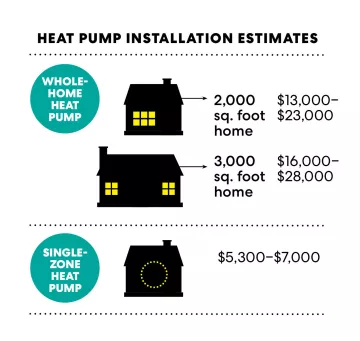
Renters can plug portable micro heat pumps into a standard 120-volt outlet to heat or cool a space in mild climates. Gradient and Midea are currently developing heat pumps that work well in temperatures below zero. In the kitchen, a portable induction cooktop is an affordable way to get the air quality and health benefits of electric cooking.
Water Heaters
Heat pumps also work for water heaters. Before buying one, you’ll need to figure out what size you need, based on how much water you use. These appliances need air circulation from which to pull heat, so keep space in mind. They’re great for basements, as they function as low-grade dehumidifiers.
If you’re tight on space or don’t use lots of water in different parts of your home simultaneously, a tankless electric water heater, also called an on-demand water heater, is another option. These can be mounted inside or outside the home, and some smaller options can be affixed to a single sink or showerhead. Be aware that tankless water heaters draw so much power that you may need to upgrade the electrical service in your house.
Heat Pump Water Heaters
Replacing electric: $3,600–$4,800
Replacing gas: $4,300–$6,500
Tankless Water Heaters Nine models tested by Consumer Reports ranged from $525 to $1,150. Installation adds at least $800 to $1,500, according to HomeAdvisor.
Three highly rated options:
Rheem Performance Platinum 40-gallon Smart Tank Electric Heat Pump Water Heater, $1,600
A.O. Smith Signature 100 50-gallon Electric Water Heater, $530–$570
Stiebel Eltron Tempra 24 Trend 240-Volt 4.68-GOM Tankless Electric Water Heater, $650–$700
Electric Cooking
It turns out that combusting a fossil fuel in your kitchen isn’t good for your health. A recent study found that pollution emitted from gas stoves can linger for hours, even in rooms far from the kitchen.
Electric induction cooktops and ranges are an excellent alternative, using an electromagnetic field to transfer heat directly to cookware. These are safer because there’s no flame or combustion. You just need to make sure you’re using cookware that’s magnetic.

While induction is gaining in popularity, if you still have doubts, you can always buy a noninduction electric stove, the most common stove type in the US.
No matter what type of stove you’re in the market for, check which style your kitchen is already set up for, or you might be in for a costly retrofit.
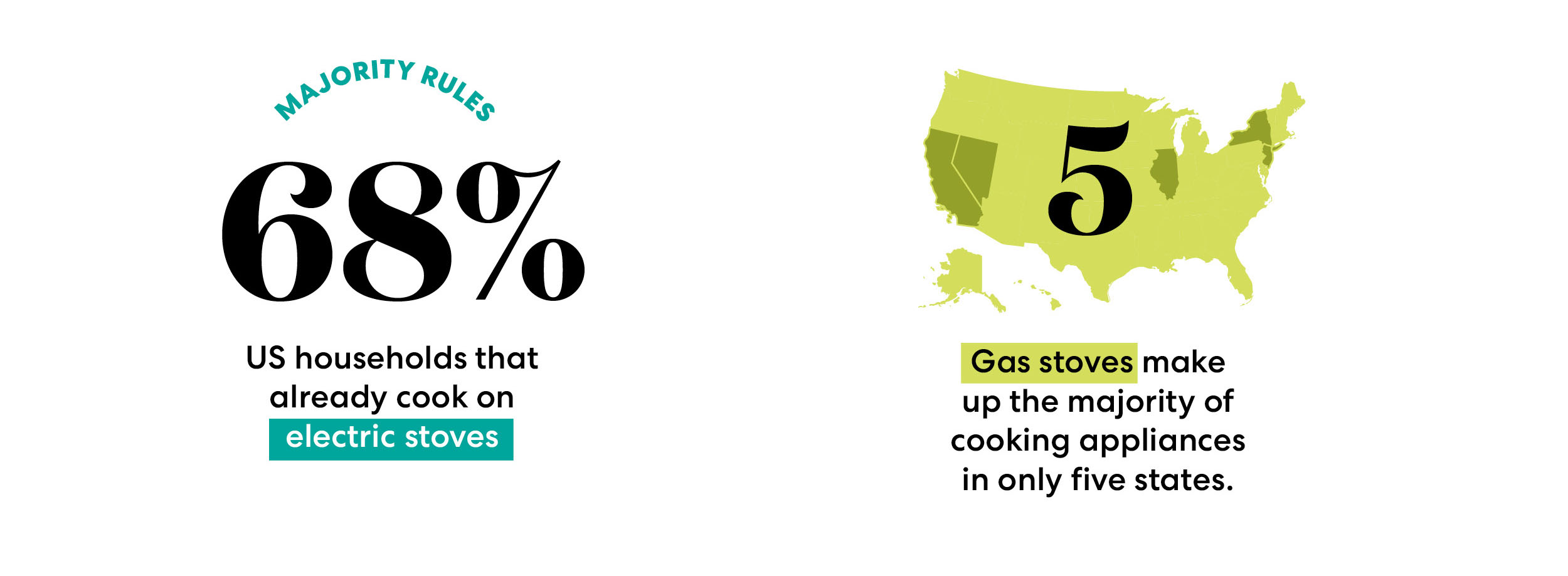
Cooktops & Ranges
According to Consumer Reports, here are the models to look for.
Portable induction cooktops: Duxtop 9600LS ($112), Avantco IC1800 ($120), and Duxtop 9100MC ($83)
30-inch induction cooktops: Bosch 800 Series NIT8060UC ($2,350–$2,435), Wolf Contemporary CI304C/B ($2,500), and GE Profile PHP9030DJBB ($1,552)
Induction ranges: LG LSE4617ST ($3,700), GE Profile PHS93XYPFS ($4,000), and Frigidaire Gallery GCRI3058AF ($1,450)
- Electric stoves: KitchenAid KFED500EBS ($2,338), LG LDE4413ST ($1,200), and GE JB735SPSS ($630)
 The Magazine of The Sierra Club
The Magazine of The Sierra Club

